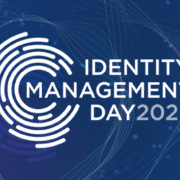
Alphabet Soup: Common IT Terms and Abbreviations
The deeper you get into any industry or field, the more jargon and abbreviations you come across. And when you want to stay up-to-date but you find yourself outside your area of expertise, all those letters can make understanding difficult.
Here at Infinity, Inc., we don’t just say we make technology make sense—we mean it. We want you to know exactly what vendors are talking about so you can make the best decisions for yourself and your business. Use the list of common IT terms and abbreviations below to make sure you always know what’s being discussed.
Bookmark this page for quick, easy reference, and send us any other acronyms or abbreviations you come across. We’ll update this list with your submissions so you always have one current source of information.
Common IT Terms and Abbreviations
*aaS – as-a-Service. Offerings that have become more and more popular as businesses—like the customers they serve—require more customized solutions. Born out of cloud computing, Saas (Software-as-a-Service) dates back to 2001 and allows updates to be delivered without accompanying physical hardware. While Saas began as a subscription based, now the various -aaS options can simply mean outsourced. Common types include IaaS (infrastructure) and PaaS (platform).
BCDR – Business Continuity and Disaster Recovery. A critical component for any company, business continuity is the combination of tools, techniques, manpower, and processes required to minimize or even completely eliminate downtime in the face of an emergency. This plan includes, but is not limited to, your business’s IT considerations. It must consider all departments and functions to determine which are critical and how they need to be able to function. It includes BDR (see below) as a necessary element but encompasses much more than that. Get the Readiness and Disaster Recovery checklists here.
BDR – Backup/Disaster Recovery. This refers specifically to the safe retrieval of periodically archived data for your business during or after a catastrophic event. Proper BDR backs up your data on a regular/frequent basis and can be recovered in minutes. It is an important component of BCDR, but merely one aspect of that larger strategy.
CPU – Central Processing Unit. Often called the ‘brain’ of the computer, the CPU is a chip inside your computer performing the actions that various software programs tell it to. (See also GPU)
CRM – Customer Relationship Management. This technology stores information, enables communication, and, ideally, helps your employees cultivate stronger relationships with your customers and prospects. Like most programs, however, it’s only as good as the data you put into it. And while most people have heard of Salesforce and Hubspot, fans of O365 may be happy to learn that Microsoft offers a CRM as well.
DKIM – DomainKeys Identified Mail. These are DNS entries used to protect against “spoofing,” to help protect against phishing and spam. When it is enabled, emails being sent out from your server have a digital signature, which the receiving server uses to authenticate that the email is valid. Unfortunately, DKIM can only protect you if the sender is set up with DKIM records for their emails and you are set up to check the SPF records for emails you receive.
DMARC – Domain-based Message Authentication, Reporting, and Conformance. This is another step against spam, phishing, spoofing, and other email attacks. It allows a sender to indicate that their messages are protected by SPF and/or DKIM, and tells a receiver what to do if neither of those authentication methods passes – such as junk or reject the message. DMARC removes guesswork from the receiver’s handling of these failed messages, limiting or eliminating the user’s exposure to potentially fraudulent and harmful messages. DMARC also provides a way for the email receiver to report back to the sender about messages that pass and/or fail DMARC evaluation.
DNS – Domain Name System. In very simple terms, you can think of DNS as a phone book for websites. It’s what brings you to our Home page when you type “infinityinc.us” rather than 54.173.200.42. Machines prefer numbers; humans prefer names.
ERP – Enterprise Resource Planning. ERP is a single system that integrates the various software needs of different departments in your business. Typically used in order fulfillment, ERP removes the paper delays and communication obstacles that can occur when every department uses its own standalone software. Many companies may choose to install only one or two modules at a time—finance and HR, for example—and those interested in starting with a program that’s already familiar may want to look at Microsoft’s ERP.
GB – Gigabyte. A measurement of digital storage, the GB is a billion bytes. In data usage terms, 1 GB could let you send 1,000 emails each month or browse the internet for 20 hours. Size-wise, a GB is larger than a MB (megabyte) and smaller than a TB (terabyte).
GPU – Graphics Processing Unit. This electric circuit helps your computer create images faster. Being dedicated to graphics, it frees up your CPU to focus on other functions.
HTTP/HTTPS – Hypertext Transfer Protocol/Secure. HTTP is what lets you see what’s on a website. It is the communication of data from the web server to the browser you view the page through. HTTPS encrypts this transfer so the data cannot be intercepted by hackers.
IoT – Internet of Things. The IoT is the network of devices such as cars, speakers, and sensors that share information and connectivity. This network allows you to control the lights in your home using an app and can notify the grocery store when you’re running low on milk in the fridge, for example. Computers and phones—while used for connecting—are not typically called IoT devices because the term is usually reserved for devices that wouldn’t be expected to have an Internet connection and that can communicate without human interaction. Watch a video on IoT here (4:31 min) and find more videos here.
MFA – Multi Factor Authentication. This is one of the most effective ways to protect your accounts. Beyond just logging in with a password, MFA requires an additional approval or proof that you are the person tied to the account. That extra ‘factor’ can be an app notification on your phone to approve your sign-in or a texted code for you to enter to confirm you are who you say you are. More advanced methods can involve biometrics such as fingerprint scans on a dongle that has to be connected to the device you are trying to log into, plus others. With all the weak and shared passwords out there, and the millions of records that have been breached, MFA is a highly recommended way to strengthen your cyber security. Watch a quick animation about MFA here.
MSP – Managed Services Provider. AKA Infinity, Inc. This is what we are for your business. We provide peace of mind by managing your network and all its related services. We keep you protected, updated, and ready for tomorrow. An MSP is a partner that works with you to understand your current business needs regarding software, hardware, access, and connectivity; and who also helps you strategically plan for your company’s future. Learn more here.
NOC – Network Operations Center. Also referred to as a datacenter, the NOC is the central location of your company’s servers and networking equipment. Some businesses have an on-site NOC monitored by technicians and engineers. Others choose an off-site NOC specifically designed to house server equipment that often comes with 24/7 monitoring for secure backups.
PII – Personally Identifiable Information. This is the data about you that criminals want and will use against you. It can be a single piece of information, such as your social security number, which is unique to you. Or it can be part of your identity such as your full name, email, an account number, or your address. Taken individually, some PII may not put you at much risk of identity theft—there are likely many “John Smiths” in the world. But combined, these details can be used to break into your bank accounts or steal the contacts in your work or personal email. They can also be sold on the dark web to the highest bidder.
RAM – Random Access Memory. RAM is your computer’s “working memory.” You can think of it as the processing space that allows your computer/phone/tablet to do things quickly. Although it is commonly confused with the memory space on your hard drive, they are not the same. Having a lot of RAM can make watching videos smooth and fast. It can mean high performance even when you have 20 different programs running. It is not the same as storage, however. Having a lot of hard drive space (storage) means you can save those large video files and access them any time you want. It can mean room to download programs and save photos. Hard drive size won’t affect your speed in accessing them though. That’s what RAM does.
RBL – Remote Block List. This is a list maintained by an organization dedicated to fighting email spam. It adds servers to the list based on their reputation as being a known sender of spam emails.
SMTP – Simple Mail Transfer Protocol. An internet standard for “email-communication” first officially set in 1982 and updated in 2008. It defines the rules on how an email is to be sent, acknowledged, and returned when complications arise. Emails are broken into 3 parts, the MAIL (establishes who sent the email), RCPT (who is supposed to receive the email), and the DATA (the actual contents). All 3 of these things must contain information for an email to flow properly. Learn more about email and spam filters here.
SPF – Sender Policy Framework. These are DNS entries (see DNS above), that publish where you send your emails from. When configured correctly, recipient email servers can check the SPF record for your domain to determine if an email is sent from one of your denoted servers. Unfortunately, SPF can only protect you if the sender is set up with SPF records for their emails and you are set up to check the SPF records for emails you receive.
SSL – Secure Sockets Layer. This is the standard security protocol that makes communication between a web server and a browser private. This technology encrypts your data when submitting forms or making purchases so that it cannot be intercepted by hackers.
UPS – Uninterruptible Power Supply. The big black box your computer is (or should be) plugged into right now is called a UPS. While a power strip allows you to plug in multiple items using one socket, and a surge protector is designed to divert extra electricity into a grounding wire, the UPS actually helps regulate the electricity going into your machine to keep it steady and contains a battery to provide power for a limited time in the event of an outage.
VoIP – Voice over Internet Protocol. This is a type of hosted phone system that does not rely on landlines but rather on bandwidth. Typical benefits include uptime – since the service is not physically based, it continues to work when your office is hit with a power outage, flooding, or other damage; and savings – hosted phone systems are usually less expensive to install and maintain while providing more features than premise systems. Learn more here.
VPN – Virtual Private Network. This is a way to connect more securely. It extends a private network (for example, your business’s network) across a public network (your home internet or wifi) so you can send and receive data as if you were in your office directly connected to the secure network. It adds critical protection to your sensitive business messages and information, and it can be encrypted as well.
WiFi. Yes, we know everyone knows this one. But did you know that it’s not actually a direct abbreviation? Commonly misrepresented as “wireless fidelity,” the -fi part of wifi is believed to originate from the term hi-fi.
So there are some common IT terms and acronyms to help you understand more about technology. From purchasing hardware to figuring out the services your business needs, this list should lead to more informed decisions. And we’ll keep adding to it, so submit your own suggestions and check back for updates. You can also learn more on our Resources page.











